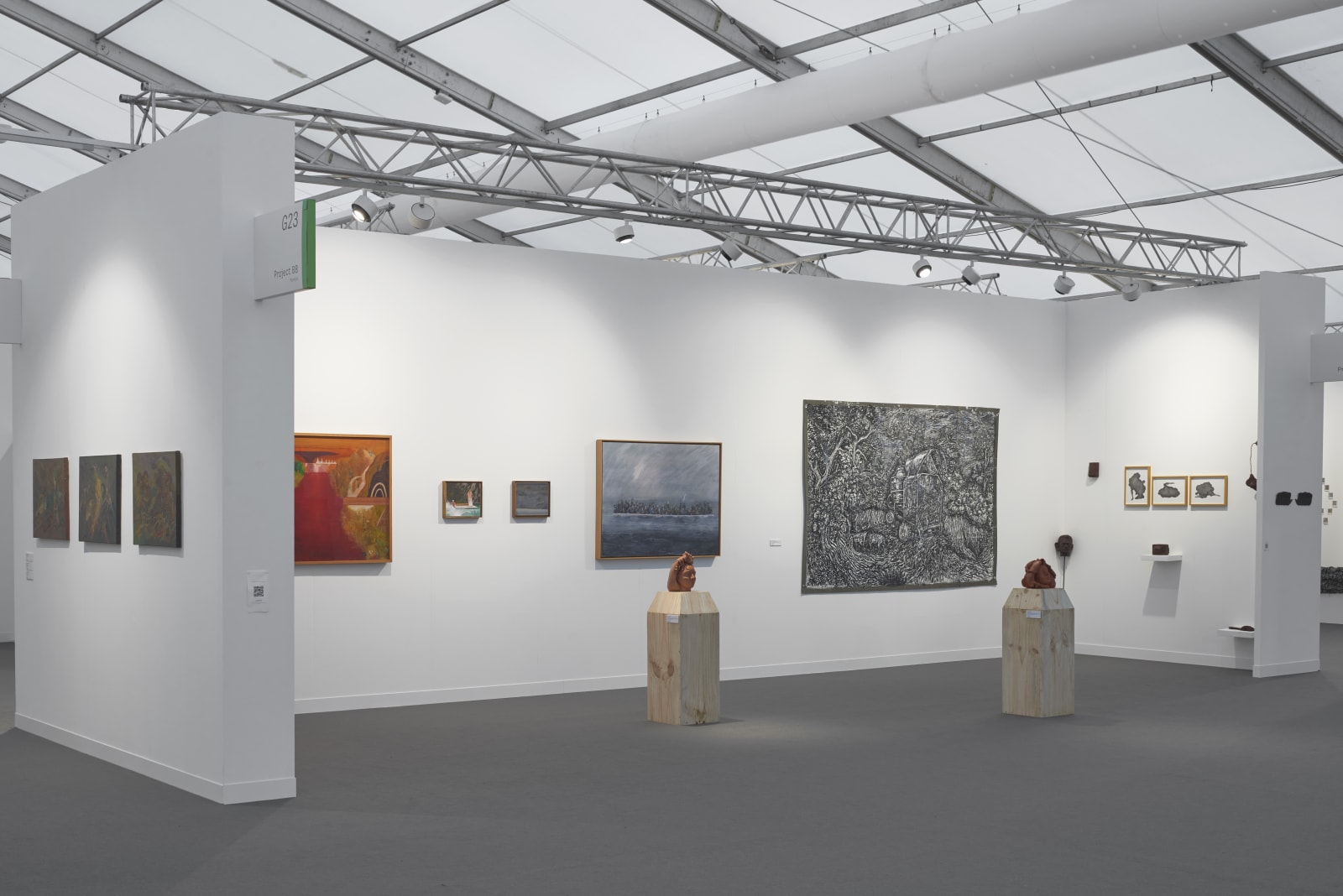G23
Our booth presents a curation of artists exploring the tenuous relation between the human and ‘non-human’ - be it nature, the outdoors, or politically contested territories. As one digs deeper, human traces are exposed within the organic, seemingly ‘untouched’ surfaces of our landscapes. What stories might these fluctuating imprints contain? Trupti Patel’s sculptures appear as landscapes inscribed upon a female head, occupying an interstice between the literal and poetic. Out here, materiality itself becomes symbolic, for the artist uses raw pigments of earth sourced from each political state, probing the tangibility of belonging and land. Munem Wasif further extrapolates the darker contours of political belonging, as his Dark Water series juxtaposes monochrome images of still water - an innocuous ocean - with written accounts of Rohingya refugees (often fatal) escape at sea.
In contrast, Anupam Roy’s landscape appears dark, stormy; here, nature is no longer a passive or serene outsider, but emerges as a complex, interwoven, and ominous presence to be reckoned with care. Next to Roy’s tumultuous terrain, lies Amol K Patil’s nuanced sculptures and drawings, wherein a haunting and eerie temporality shrouds a concealed protagonist. Disembodied hands multiply as witnesses on the wall whereas seemingly banal objects - a radio, an electric plug socket - upon a closer look, reveal human fragments, delicately folded into their surface.
Amitesh Shrivastava’s paintings turn to the narrative and mythical, as human morphs into nature, man into animal, within ever-shifting and hypnotic compositions. For Mahesh Baliga, each painting holds a precise story; yet in their sequence, the narratives often erode into each other. A fragile raft holds hordes of people, caught in-transit, in the midst of the ocean, as a storm overwhelms the frame; a dark, blood-red river runs through a canvas; and in another, the artist himself is seen on a walk, in the midst of an arid landscape. Both tangible and the intangible become the crux of Hemali Bhuta’s soft, delicate textiles - as the artist exhumes fragments from her garden (leaves, roots, stems, and so on), and then prints their negative traces using organic pigments sourced from the same landscape.


















